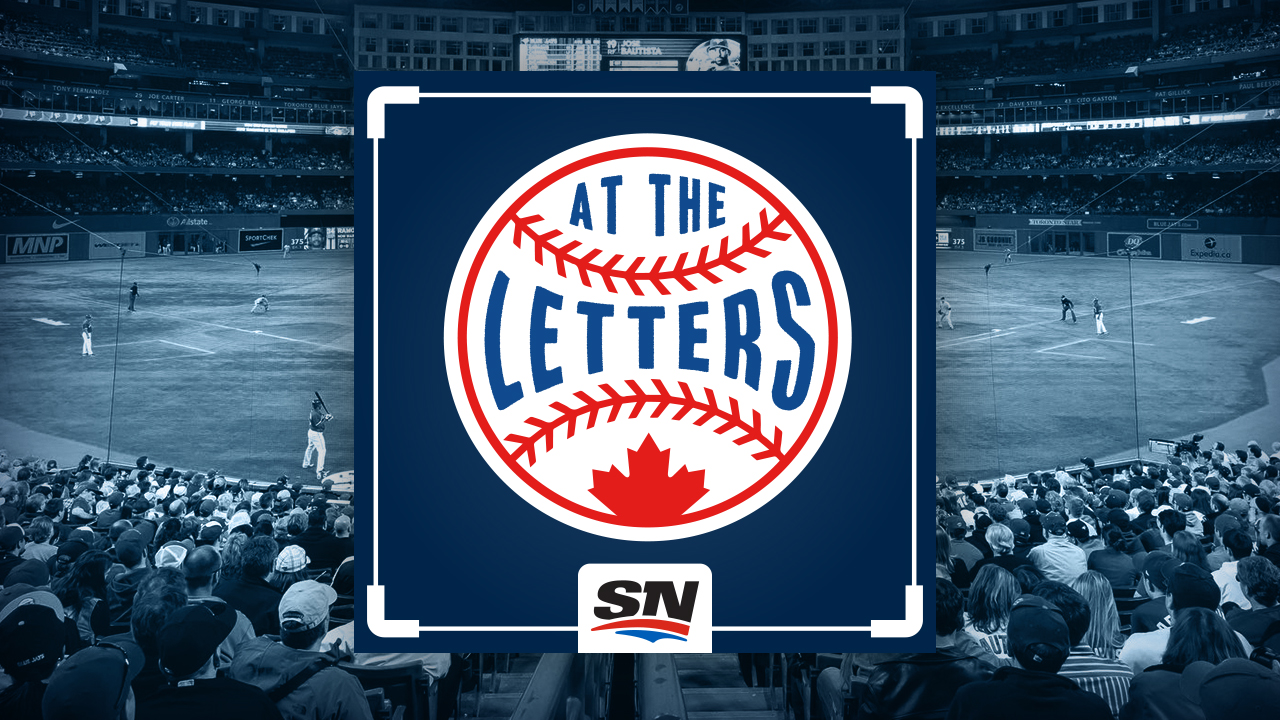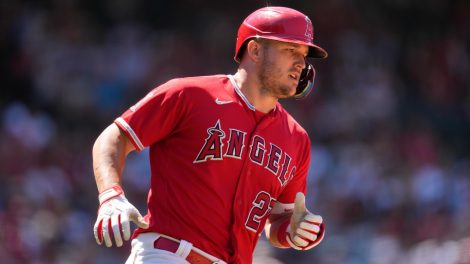When the 2020 season opens on July 23, the sport will look different in a number of subtle ways, from the safety measures, to intradivision-focused schedule, to the changes in media access.
Perhaps the biggest change, in the early going at least, will be the expanded rosters. Having the ability to call on 30 players on any given day theoretically opens up a wide swath of tactical options, testing the chops of managers around the game.
Unfortunately, in practice, the day-in and day-out chess match of baseball is unlikely to be elevated to new heights. The extra players, more than anything else, will be pitchers helping teams cover innings in the first two weeks when starters aren’t stretched out and able to deliver five or six innings per night.
There will be a few specialized position players around the league who might get an early look, but the Toronto Blue Jays aren’t brimming with exciting position players on the brink of contributing at the big-league level. The unknown availability of Brandon Drury and Jonathan Davis makes it even more likely Toronto will go with a relatively normal bench and stack up on pitching.
That doesn’t mean they can’t do something fun.
What follows, to be clear, is an idea, not a prediction. The Blue Jays have a number of directions they could go in the early going, and they haven’t been forthright about what they’re planning just yet. However, based on their strengths it might be prudent for them to explore an idea that’s at least eight years old for the franchise: piggybacking.
[snippet id=4722869]
The concept of using two starters per day, each in smaller 2-4 inning stints, is exceedingly difficult to implement at the major-league level. Occupying 10 roster spots with pitchers that are on a fixed schedule severely limits your options and — perhaps more importantly — starters have a strong desire to be deployed traditionally in order to maximize their earning potential.
However, early in 2020 there are more roster spots available and it might be inadvisable for starters to go more than 2-4 innings per outing early on anyway. The Blue Jays are a particularly interesting test case because they are long on starting depth with guys like Shun Yamaguchi, Ryan Borucki, Anthony Kay, T.J. Zeuch, and Jacob Waguespack sitting outside their presumed top five. On the other hand, they are short on traditional relievers they can count on, even if there are a few prospects who might have something to say about that.
The Blue Jays also have pitchers with radically different styles who could represent profound changes of pace mid-game. Not only would piggybacking prevent starters from turning over the lineup too many times, it would guarantee that opponents’ next at-bat after the first starter exited would come against someone hand-picked to give them a particularly different look.
The whole enterprise would eat up four roster spots (Hyun-Jin Ryu, as the ace and a guy seemingly fixated on a particular routine, would go without) perfectly filling in the extra spots the early-season expansion calls for, while allowing the Blue Jays to carry a conventional bench and bullpen.
Before we dive into what it would look like, it’s important to note this setup is based on the possibly-cynical assumption that Nate Pearson is not on the active roster out of the gate. If he is, he could slot into the fifth spot of the rotation causing Trent Thornton to partner with Chase Anderson and T.J. Zeuch to lose the game of musical chairs.
[relatedlinks]
Spot No. 1
Starter: Hyun-Jin Ryu
Partner: N/A
Rationale: As stated above, Ryu is on the particular side when it comes to his routines. That’s a feature not a bug, and one he shares with many great pitchers. As such, the Blue Jays would be wise to make his pitching environment as “normal” as possible. That means following him with a parade of traditional relievers.
On pure stylistic terms, the most exciting match for Ryu — a soft-tossing southpaw with an elite changeup — would be the fireballing righty Pearson, but that’s not a realistic scenario. Whenever the big right-hander makes his debut it will come in the first inning as the Blue Jays groom him to be a top-of-the-rotation presence.
Spot No. 2
Starter: Tanner Roark
Partner: Shun Yamaguchi
Rationale: There’s nothing particularly unusual about Roark’s arsenal or the way he deploys it. The veteran throws four-seam and two-seam fastballs at approximately 92 m.p.h. approximately 55 per cent of the time with a slider as his primary breaking ball. He mixes in a curve and changeup approximately 10 per cent of the time as well and neither is outstanding — although the curveball has potential thanks to a high spin rate. What all that means is that it’s hard to find a polar opposite for him because there’s nothing extreme about what he does.
Yamaguchi gets the nod here because he’s probably the most unusual of the Blue Jays’ depth starters. Unlike Roark he throws his 90-m.p.h. fastball significantly less than half the time (43.7 per cent in NPB action last year, according to Deltagraphs) and his go-to out pitch is a splitter instead of a breaking ball. Theoretically, Yamaguchi would be best paired with someone who throws their fastball hard and frequently, but Roark is the closest thing the Blue Jays have to that in a top-five that relies heavily on secondary offerings.
Spot No. 3
Starter: Matt Shoemaker
Partner: Anthony Kay
Rationale: Shoemaker and Kay are probably the best match of this bunch starting with the simple fact that the veteran is a righty while the youngster is a southpaw. It goes far deeper, though.
Shoemaker’s fastball is low-velocity (16th percentile) and low-spin (18th percentile) and he throws it less than half the time, while Kay is above average on both counts (56th percentile and 59th percentile, respectively) — albeit by a slim margin — and he leant on it 62 per cent of time in his MLB cameo last year. Shoemaker’s best pitch is his splitter and he mixes in curveballs just two per cent of the time. As for Kay, his swing-and-miss offering is a slow curve.
There’s nothing similar about what the two are featuring, which makes them ideal partners.
Spot No. 4
Starter: Chase Anderson
Partner: T.J. Zeuch
Rationale: There’s an argument to be made that Waguespack is a better pitcher than Zeuch at this point, but the latter gets the nod here because he has a clear style that contrasts Anderson. The veteran relies on his four-seam fastball and changeup to force soft contact — specifically forcing weak flyballs and pop ups. Thanks to that approach, he’s always been excellent at handling left-handed hitters, but the lack of a top-notch breaking ball causes him to struggle against righties.
In contrast, Zeuch is a two-seam fastball and slider specialist, whose concerns have always been with opposite-handed hitters. When he’s pitching well he’s keeping the ball low in the zone — and as a result, on the ground. It would be unfair to expect a major step forward from Zeuch until he’s able to miss more bats (his K/9 at Triple-A was just 4.5) but having him follow Anderson in a shortened outing could bring the best out of him.
Spot No. 5
Starter: Trent Thornton
Partner: Ryan Borucki
Rationale: From a big-picture perspective, these two are actually rather similar. Both 26-year-olds were relatively unheralded prospects who posted solid rookie seasons with caveats. It’s still unclear if Borucki can stay healthy or miss enough bats to be a consistent starter. Thornton still hasn’t definitively proven he’s not a reliever, and his sky-high flyball rate from 2019 opens up questions about his ability to keep the ball in the yard.
In terms of repertoires, they differ significantly, though, beyond just the handedness disparity. Thornton relies on high-spin fastball and breaking ball to miss bats while Borucki’s success comes from a sinker-changeup combo that allows him to manage hard contact. Thornton’s most impressive pitch movement is vertical: the ride on his fastball and the drop on his curve. Borucki’s is horizontal as the arm-side run on his sinker and changeup are both above-average.








